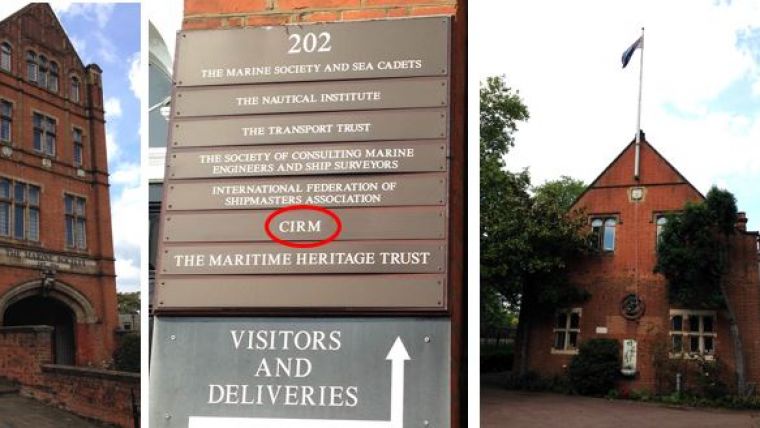Marine Electronics - An Industry View
CIRM
As the principal international association for marine electronics companies, CIRM brings individual companies together into a powerful collective body with an influential voice. As a non-profit organisation we are totally dedicated to the needs of our members. In respect of Hydrography, CIRM not only represents the industry utilising the digital products generated by Hydrographers around the world, but our members also produce tools and equipment that help the hydrographic community to do their job.
CIRM exists to promote the application of electronic technology to the safety of life and efficient conduct of vessels at sea. We strive to foster relations between all organisations concerned with electronic aids to marine navigation, communications and information systems.
CIRM was originally founded in Spain in 1928 by 8 companies engaged in the application of radio to the maritime service. It was reconstituted in Belgium in 1947 and subsequently moved to London. It is now the principal international association for companies engaged in maritime electronics, with current membership of some 100 companies from 29 nations worldwide.
CIRM is one of the nine original international bodies accredited in 1961 as a non-governmental organisation in consultative status to the International Maritime Organization (IMO).
CIRM is a Sector Member of the International Telecommunication Union (ITU-R and ITU-T), and is a Liaison Member both of the International Organization for Standardization (ISO) and of the International Electrotechnical Commission (IEC).
CIRM also enjoys mutual observer status with all the other relevant international and regional organisations, including the International Hydrographic Organization (IHO), the International Association of Lighthouse Authorities (IALA), the International Chamber of Shipping (ICS), and the US Radio Technical Commission for Maritime (RTCM).
Given all of that, how does CIRM now support the hydrographic community?
There are two major aspects of the work of hydrographers that we should look at:
1. The work to define the necessary hydrographic products to support the maritime community
CIRM is deeply involved in the development of standards, like IHO S-57 or now the IHO S-100 series of standards, but also standards developed by IALA, which influence the hydrographic community. We actively participating in relevant working groups to ensure the standards developed by those organisations meet the needs of our customers sailing ships around the world or working in organisations on shore to support maritime trade, safety and security. With the direct link to end-users we are in a position to help improve the hydrographic products.
In addition, we test draft standards to ensure the desired results are produced. We validate that theoretical thoughts are implementable and have the necessary cost-benefit structure to be marketable to our members’ customers.
2. Producing and distributing hydrographic products so they can be used.
Defining hydrographic products by agreeing on and utilising international standards is only one aspect to be taken into consideration. Bringing those standards to life by creating the so defined products, keeping them up to date and making them available for use is equally important. Here the CIRM members take on the different roles of industry. Tools to conduct surveys are developed and improved by CIRM members. Our members also work together directly with Hydrographic offices to create tools to produce, validate and update, for example, ENCs. But CIRM members also service the community by distributing hydrographic products, licensing them to navigators and ensuring access to hydrographic products of different nations is easy and that they are continuously updated. In the different organisations, CIRM helps to ensure the full supply chain for hydrographic products meets the demands of the end-users.
As such, CIRM works with the hydrographic community so that products can be generated and distributed. But the work of hydrographers needs the necessary electronic equipment to display, for example, ENCs in a way that increases situational awareness for the mariner and helps them ensure safe and efficient journeys. This iw where the onboard electronic products of CIRM members are kicking in. Contributing to IMO’s ECDIS Performance standard, developing the associated testing standards with IEC, and contributing to new developments like e-Navigation are some of the activities in this arena that CIRM is involved in. These standards help CIRM members to develop the equipment to fully utilise the hydrographic data products and integrate them with data streams from other communities, like oceanography or sea traffic management.
Covering the full cycle of hydrographic data, from survey to use, CIRM is dedicated through its members and its office, to help expand the utilisation of this data as the maritime industry, both military as well as civil, needs it.
More information

Value staying current with hydrography?
Stay on the map with our expertly curated newsletters.
We provide educational insights, industry updates, and inspiring stories from the world of hydrography to help you learn, grow, and navigate your field with confidence. Don't miss out - subscribe today and ensure you're always informed, educated, and inspired by the latest in hydrographic technology and research.
Choose your newsletter(s)
























